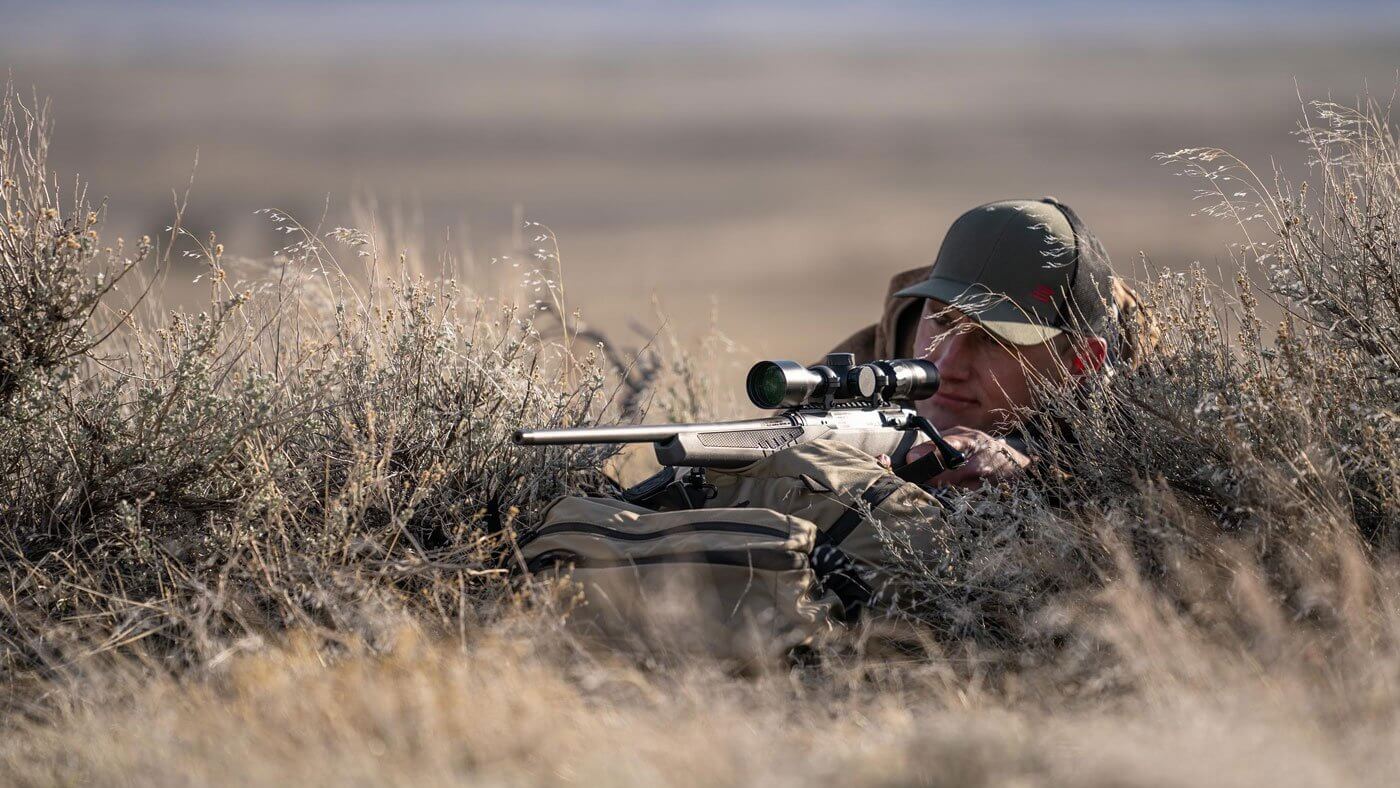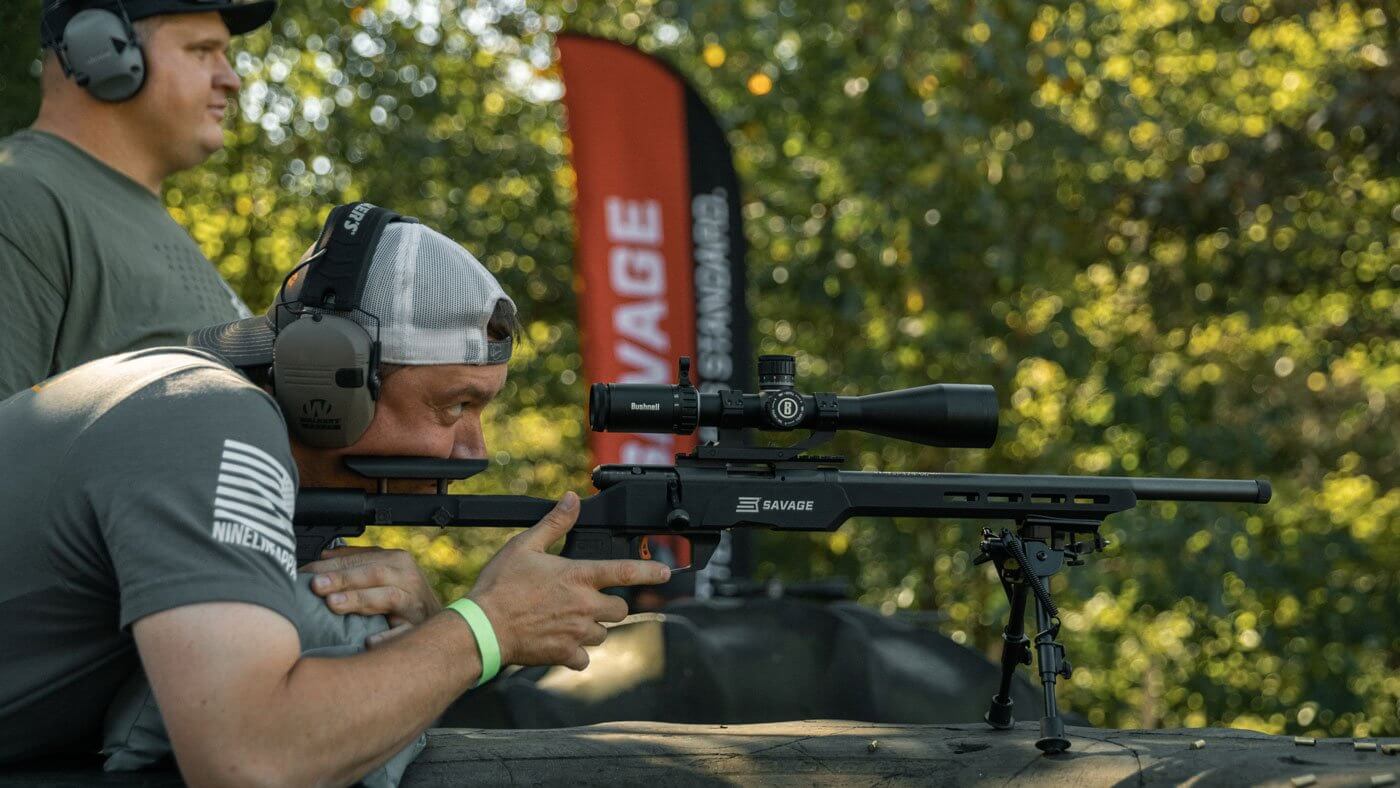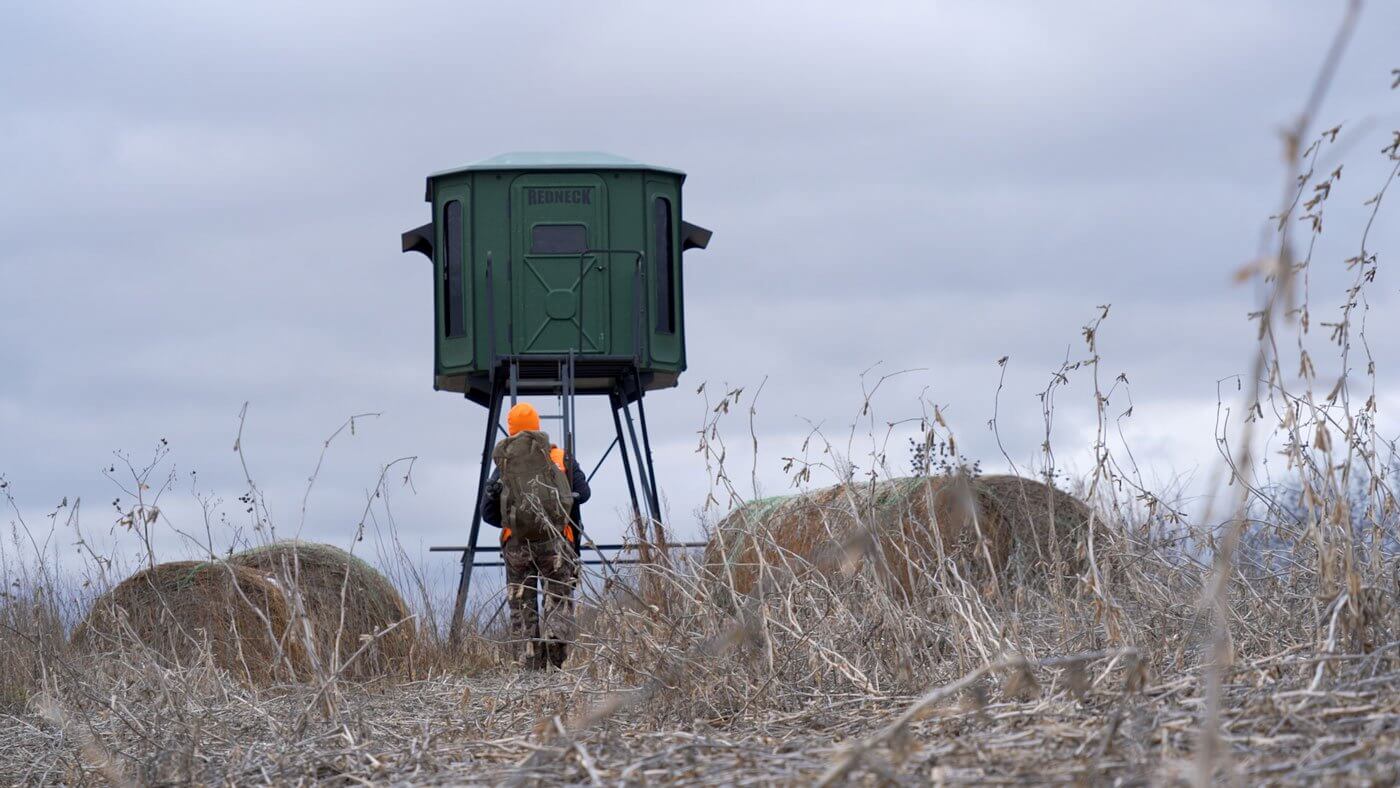- Savage Blog
- Mastering the Art of Wind Reading for Long-Range Precision
Mastering the Art of Wind Reading for Long-Range Precision

When shooting long range, few factors challenge precision shooters more than the wind. No matter how accurate your rifle, ammunition, or optic, success can be made or broken based on wind reading.
Wind can turn a seemingly perfect shot into a near miss, even at moderate distances. Mastering wind reading is an important skill in helping new shooters take their precision marksmanship skills to the next level. The ability to interpret wind direction, speed, and patterns helps shooters make accurate corrections and build confidence to hit their shots in changing conditions.
In this guide, we’ll break down the essentials of wind reading, explain how wind affects a bullet’s flight, and provide practical techniques to help you improve your accuracy in real-world shooting scenarios.
Understanding How Wind Affects Bullets
The first step in wind reading is understanding what wind actually does to your bullet in flight. As a bullet travels, it’s affected by several forces—gravity, drag, and atmospheric pressure—but wind is the most unpredictable.
Crosswind vs. Headwind and Tailwind
Crosswind: Wind blowing from the side (left or right) has the most noticeable effect. It pushes the bullet laterally, causing it to drift off target.
Headwind: Wind blowing directly toward you slightly increases drag, causing the bullet to drop a little more.
Tailwind: Wind coming from behind the shooter decreases drag, slightly flattening the bullet’s trajectory.
Most of the time, headwinds and tailwinds will not have nearly as much effect on the flight path of a bullet as a crosswind will.
The Importance of Bullet Flight Time
The longer your bullet is in the air, the more time the wind has to push it. This means that bullet velocity, weight, and distance all impact how much drift occurs. Bullets that are lighter and slower, such as a 40-grain 22 LR bullet, will be impacted by wind much more than a heavier or faster bullet.

Reading the Wind
Wind reading is about gathering clues—from the environment, the target area, and even your scope view—to estimate what’s happening between you and your target.
Mirage
Mirage is one of the best natural indicators for wind. It’s the shimmering heat waves you see through your scope or spotting scope, and it moves in response to air currents. If you see a mirage in your scope, it can be going in a few different directions.
Straight up: Mirage coming straight off the ground indicates little or no wind.
Angled at 45°: Mirage that is viewed at this angle suggests a 5–10 mph crosswind between you and the target.
Flat and horizontal: Horizontal mirage indicates higher wind speeds above 10 mph.
Mirage direction also tells you which way the wind is blowing. Learning to interpret mirage takes practice, but it’s one of the most accurate tools for wind reading when done correctly.
Environmental Cues
If you can’t see the mirage clearly, look for movement in the environment:
Grass, brush, or tree limbs – These move differently depending on the wind speed.
Dust or snow – Powdery snow and dust can be kicked up by the wind and indicate speed and direction, especially at higher speeds.
Flags, range markers, or target stands – Can provide quick visual references if available.
Vegetation
Vegetation offers wind clues even when subtle. Short grass bending slightly may indicate a 3–5 mph wind, while larger leaves or branches moving steadily suggest 10–15 mph. Observing multiple points along the bullet’s path helps you identify changes in wind between you and the target.
Estimating Wind Speed
Accurately estimating wind speed is crucial for making ballistic corrections. Here are several ways to refine that skill.
Using a Wind Meter
A handheld anemometer gives precise readings at the shooter’s position. However, it only measures wind where you’re standing—not what’s happening downrange. Use it to establish a baseline, then observe environmental cues for variations beyond your firing point.
Using Natural Indicators
Over time, shooters learn to associate specific visual cues with approximate wind speeds:
Indicator | Approx. Wind Speed | Description |
Smoke and dust are drifting | 1–3 mph | Light, barely noticeable wind |
Grass moving | 4–7 mph | Light breeze |
Leaves rustling | 8–12 mph | Noticeable wind |
Branches swaying | 13–18 mph | Moderate wind |
Trees swaying | 20+ mph | Strong wind |
Learning to correlate these signs with real-world anemometer readings helps sharpen your natural estimation skills.
Learning Through Experience
Experience is the best teacher in wind reading. Shooting in different conditions builds familiarity with how wind speed affects your bullet at various distances. Record your data in a logbook or D.O.P.E. (Data On Previous Engagements) card to refine future adjustments.
Making Wind Corrections
Once you’ve estimated wind speed and direction, it’s time to make corrections for your shot.
Determining the Wind Call
Wind calls are typically expressed in MIL or MOA, depending on your scope system. Most ballistic calculators can estimate the drift in these units once you input your caliber, bullet weight, velocity, and environmental conditions.
For example:
A .308 Winchester shooting a 180-grain bullet at 2,600 fps might drift 10 inches in a 10 mph full-value crosswind at 500 yards.
Your job as a precision shooter is to translate that drift into scope adjustments or holdovers.
Holding vs. Dialing
Holding: Using your reticle’s hash marks to adjust for wind without changing turret settings. Holding for the wind is common in faster-paced competitions, in hunting scenarios, or when you have variable winds. You may often hear this referred to as “Kentucky Windage”.
Dialing: Dialing your scope involves physically adjusting your scope turrets. It’s best used for a steady, consistent wind, and whenever you have ample time to adjust.
Many shooters prefer holding for quick adjustments, but both techniques are essential to master.
Practice and Observation
Like any precision shooting skill, wind reading improves through repetition and focused practice.
Range Drills
Shoot in Variable Winds: Don’t avoid windy days; embrace them. Challenge yourself to shoot groups in shifting conditions to refine your skills.
Use Spotters: Having a spotter call impacts and wind changes allows you to focus on the impact through your scope and focus on the adjustments that you need to make.
Record Everything: Note your conditions, wind calls, and point of impact to identify trends over time. Record these on your D.O.P.E. card for future reference.
Real-World Scenarios
Apply your wind reading skills beyond the range. Pay attention to how the wind behaves when hiking, hunting, or driving across open fields. The more you observe, the faster you’ll learn to interpret conditions intuitively.

Wind is a constant variable in precision shooting—one you can’t control but can learn to master. The art of wind reading combines observation, experience, and data. By learning how wind affects bullet flight, using mirage and environmental cues, and practicing in a variety of conditions, you’ll develop the confidence to make accurate wind calls at any range.
Even the best rifles and optics are only as effective as the shooter behind them. Take time to study the wind, log your observations, and trust your growing intuition. Over time, you’ll find that reading the wind isn’t just a technical skill—it’s a hallmark of true precision marksmanship.

